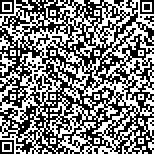| 引用本文: |
黄颖,陈剑坤,赵文翰,李际强.重叠综合征的中医证型与睡眠呼吸指标的相关性分析[J].湖南中医药大学学报,2020,40(2):175-179[点击复制] |
|
| |
|
|
| 本文已被:浏览 2865次 下载 873次 |
| 重叠综合征的中医证型与睡眠呼吸指标的相关性分析 |
| 黄颖,陈剑坤,赵文翰,李际强 |
| (广东省中医院大学城医院综合三科, 广东 广州 510006) |
| 摘要: |
| 目的 探讨重叠综合征(overlap syndrome, OS)的中医证型与睡眠呼吸指标的相关性。方法 选取70例经确诊为OS患者,比较患者中医证型分布规律及不同证型间睡眠呼吸指标AHI、LSpO2、ESS的差异性,并对不同证型与AHI、LSpO2、ESS间进行Spearman相关性分析。结果 (1)70例OS患者中医证型比例由多至少依次为:痰瘀互结证37例(52.9%)、痰湿内阻证11例(15.7%)、气阴两虚证9例(12.9%)、痰热内扰证8例(11.4%)、脾肾阳虚证5例(7.1%)。(2)痰湿内阻证OS患者的AHI、ESS显著高于其他证型患者,脾肾阳虚证OS患者的AHI、ESS显著低于其他证型患者。(3)Spearman相关性分析提示,痰湿内阻证与AHI、ESS成正相关(P<0.01,r=0.445\0.308),脾肾阳虚证与AHI、ESS成负相关(P<0.01,r=-0.32\-0.378),而与LSpO2无明显相关性(P>0.01);其他证型与AHI、LSpO2、ESS之间均无明显相关性(P>0.01)。结论 OS患者痰证明显多于非痰证,其中痰瘀互结证占主要比例,痰湿内阻证与AHI、ESS成正相关,脾肾阳虚证患者与AHI、ESS成负相关,AHI、ESS有可能作为诊断OS痰湿内阻证和脾肾阳虚证的重要依据。 |
| 关键词: 重叠综合征 阻塞性睡眠呼吸暂停 慢性阻塞性肺疾病 中医证型 临床特征 相关性 |
| DOI:10.3969/j.issn.1674-070X.2020.02.011 |
| 投稿时间:2019-08-30 |
| 基金项目:广东省自然科学基金(2017A030313724);广东省中医药健康服务于产业发展研究中心立项(2019YBB05)。 |
|
| Correlation Analysis Between Traditional Chinese Medicine Syndrome Types of Overlapping Syndrome and Sleep Respiration Indexes |
| HUANG Ying,CHEN Jiankun,ZHAO Wenhan,LI Jiqiang |
| (The Third Department of Comprehensive Medicine, University City Hospital of Guangdong Provincial Hospital of Traditional Chinese Medicine, Guangzhou, Guangdong 510006, China) |
| Abstract: |
| Objective To explore the correlation between traditional Chinese medicine (TCM) syndrome types of overlap syndrome (OS) and sleep respiratory indexes. Methods A total of 70 patients diagnosed as OS were selected. The distribution of TCM syndromes and the differences of AHI, LSpO2, ESS indexes among different syndromes were compared, and Spearman correlation analysis was carried out between different syndromes and AHI, LSpO2, ESS indexes. Results (1) The proportion of TCM syndromes in 70 OS patients was 37 cases (52.9%) of intermingled phlegm and blood stasis syndrome, 11 cases (15.7%) of phlegm-dampness internal resistance syndrome, 9 cases (12.9%) of Qi-Yin deficiency syndrome, 8 cases (11.4%) of phlegm-heat internal disturbance syndrome, and 5 cases (7.1%) of spleen-kidney Yang deficiency syndrome. (2) AHI and ESS indexes of OS patients with phlegm-dampness internal resistance syndrome were significantly higher than those of other syndromes, and AHI and ESS indexes of OS patients with spleen-kidney Yang deficiency syndrome were significantly lower than those of other syndromes. (3) Spearman correlation analysis showed that patients with phlegm-dampn internal resistance syndrome were positively correlated with AHI and ESS indexes (P<0.01, r=0.445\0.308), spleen-kidney Yang deficiency syndrome was negatively correlated with AHI and ESS indexes (P<0.01, r=-0.32\-0.378), but had no significant correlation with LSpO2 index (P>0.01); There was no significant correlation between other syndromes and AHI, LSpO2, ESS indexes (P>0.01). Conclusion The number of OS patients with phlegm syndrome was significantly larger than non-phlegm syndrome, of which intermingled phlegm and blood stasis syndrome was the main syndrome. Phlegm-dampness internal resistance syndrome was positively correlated with AHI and ESS indexes, while spleen-kidney Yang deficiency syndrome was negatively correlated with AHI and ESS indexes. AHI and ESS indexes may be the important basis for OS phlegm-dampness internal resistance syndrome and spleen-kidney Yang deficiency syndrome. |
| Key words: overlapping syndrome obstructive sleep apnea chronic obstructive pulmonary disease syndrome types of traditional Chinese medicine clinical features correlation |
|

二维码(扫一下试试看!) |
|
|
|
|




